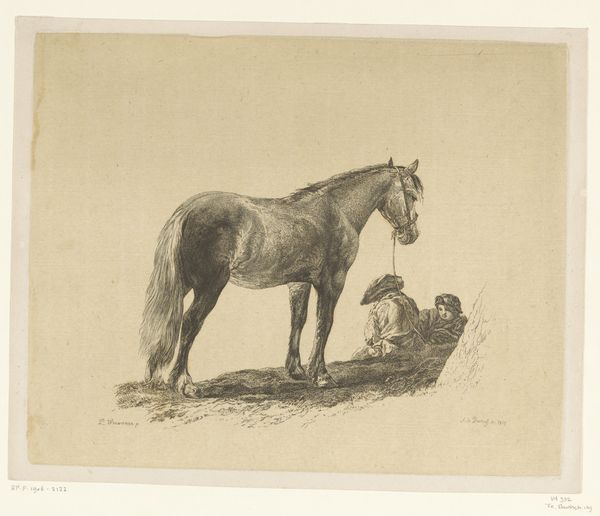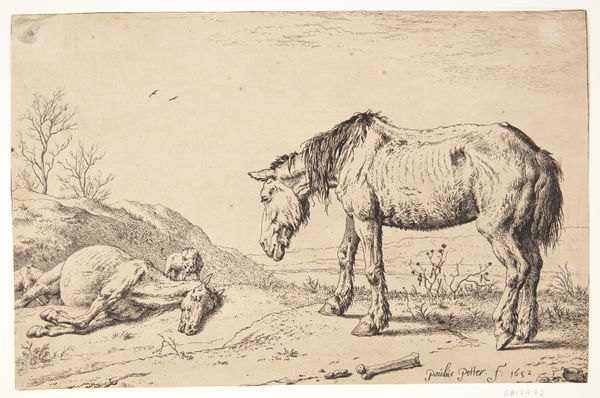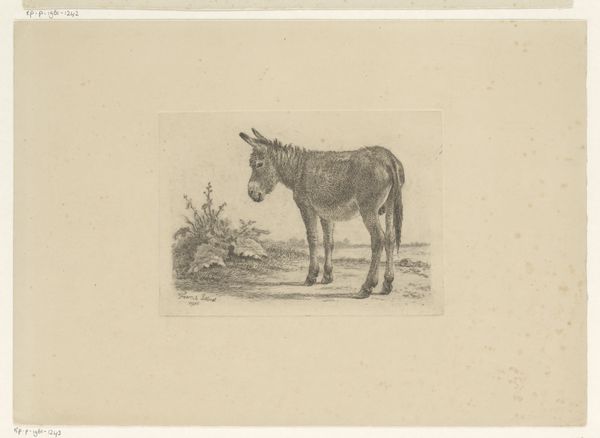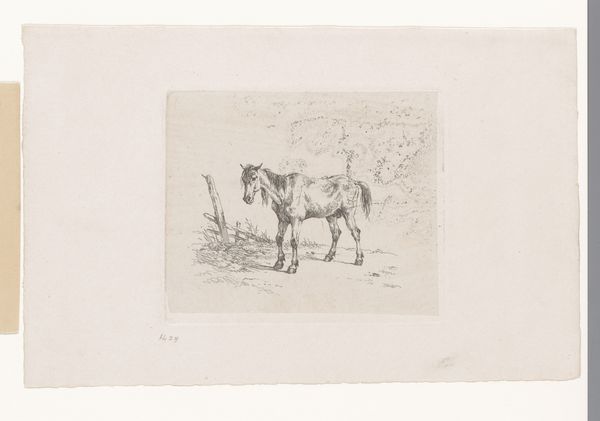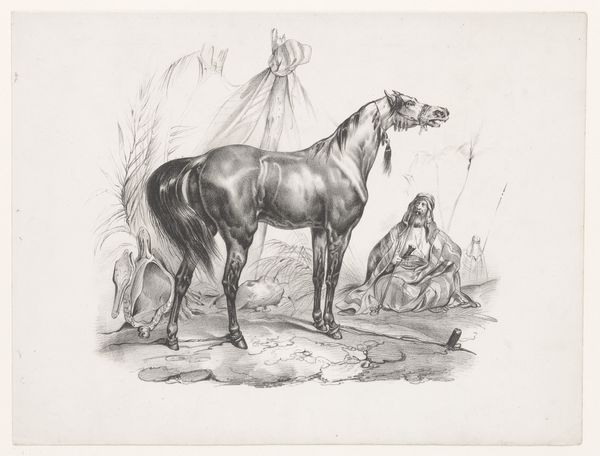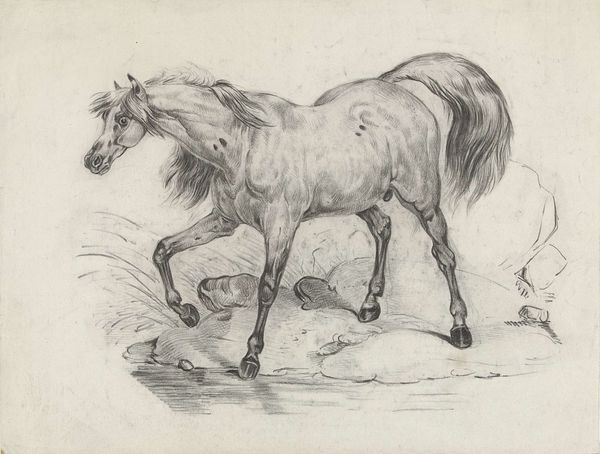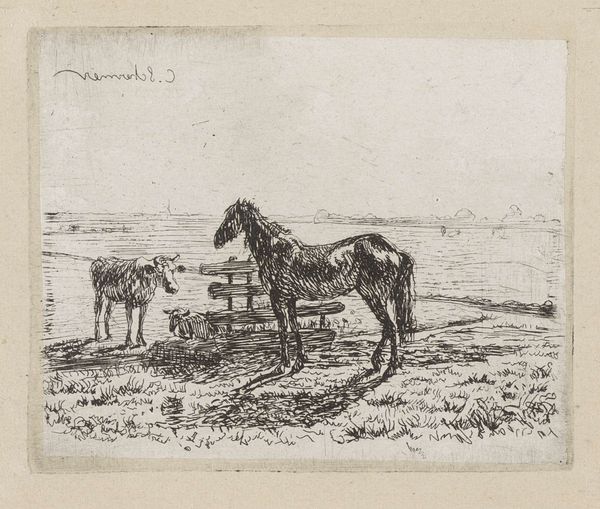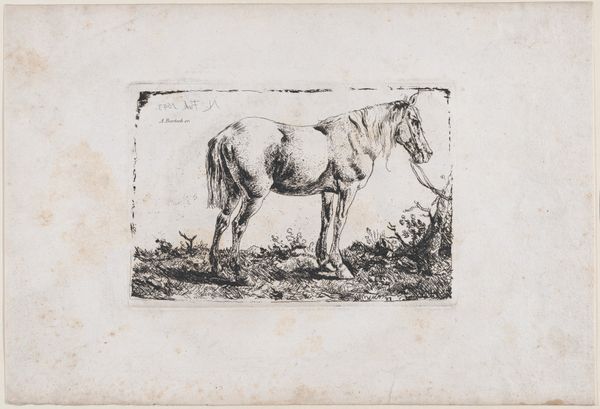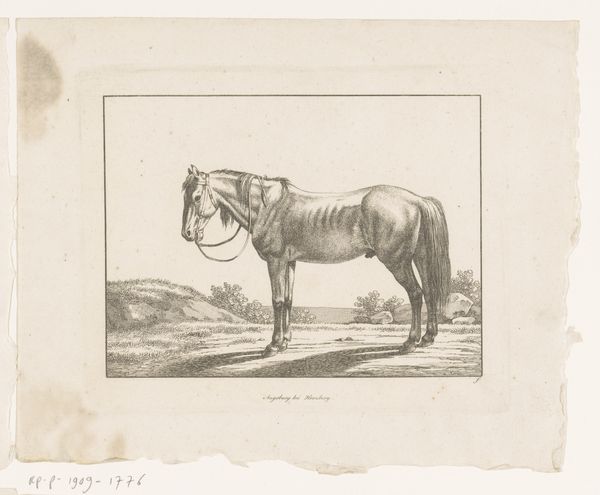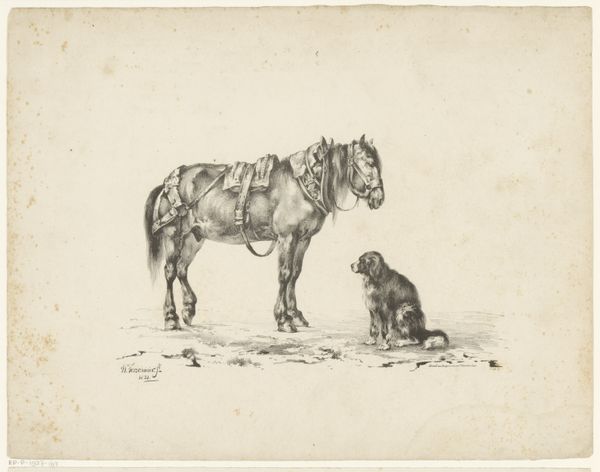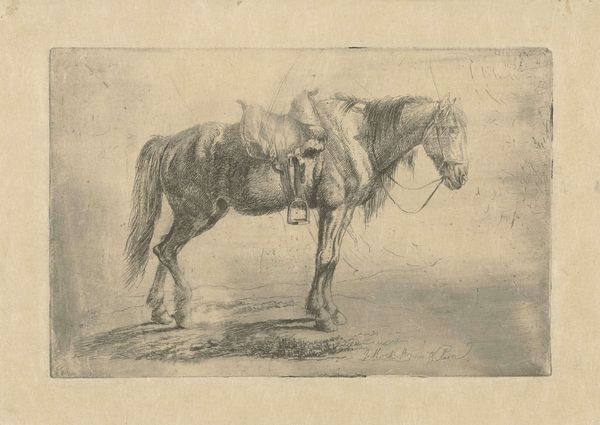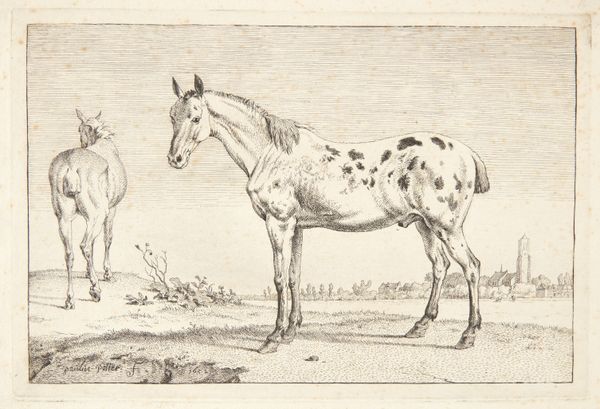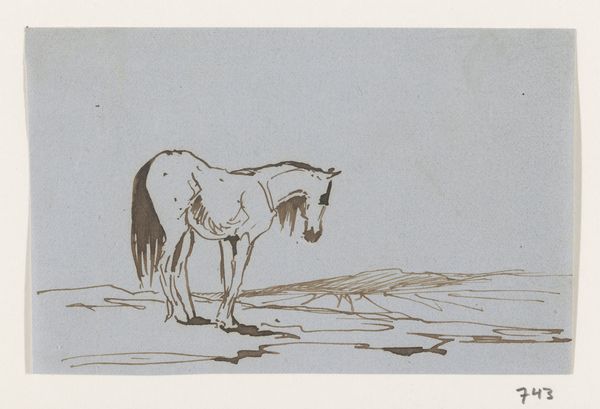
drawing, gouache, ink, pencil
#
portrait
#
drawing
#
16_19th-century
#
gouache
#
pencil sketch
#
landscape
#
personal sketchbook
#
ink
#
pencil
#
genre-painting
#
realism
Copyright: Public Domain
Curator: I'm struck by the weariness emanating from this drawing. The bowed head of the horse, the somewhat ungainly lines of the plow—it all speaks to the brute force required by agricultural labor. Editor: Indeed. Here we have "Horse with Plow," an ink, pencil and gouache drawing held in the Städel Museum collection. We've dated it tentatively to the 19th century. The artist, Philipp Stricker, captures what appears to be a commonplace scene, but its depiction reflects larger trends in rural society. Curator: It's the materiality that captivates me. The stark contrast of ink and the softer gouache almost replicates the texture of the horse's coat against the rougher-hewn wood and iron of the plow. Think about the consumption this artwork represents, paper, pigments, a commercialization that coexists with the image of rural, perhaps pre-industrial toil. Editor: I agree. Stricker presents us with not only a horse and plow, but the story of agrarian life and how that life has historically been romanticized – and perhaps even exploited - through imagery. These “genre paintings” provided insight and allowed wealthy classes an opportunity to gaze at workers doing “honest” work. Curator: Consider also the means of production – pencil and ink, easily transportable. Was Stricker producing sketches for larger paintings, a commodification of labour? Or did these have some personal value? A window into a fleeting scene or time for the artist. Editor: That brings up an important point. What was the artist’s relationship to the work being represented? Did Stricker have any personal connection to farming, and did that inform the piece in any way? The choice to depict such a scene undoubtedly carries social meaning, either consciously or unconsciously on the part of the artist. The setting, style and the availability of this artwork tells its own story about 19th century societal concerns. Curator: A confluence of rural production and the emergence of materialist values, captured in delicate line work. Editor: Precisely, a negotiation between what labour *means* against the backdrop of social history and its complex visual representation within institutions such as this museum.
Comments
No comments
Be the first to comment and join the conversation on the ultimate creative platform.
